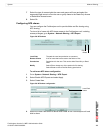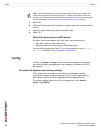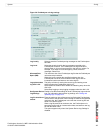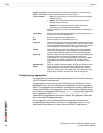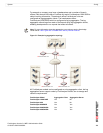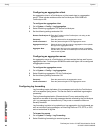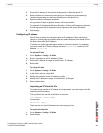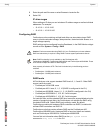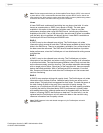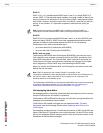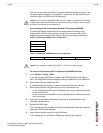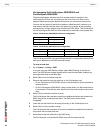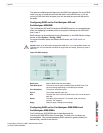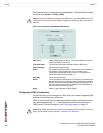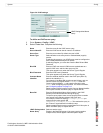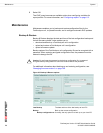
System Config
FortiAnalyzer Version 3.0 MR7 Administration Guide
05-30007-0082-20080908 63
Linear
A linear RAID level combines all hard disks into one large virtual disk. It is also
known as concatenation or JBOD (Just a Bunch of Disks). The total space
available in this option is the capacity of all disks used. There is very little
performance changes when using this RAID format, including any redundancy
available at this level. If any of the drives fails, the entire set of drives is unusable
until the faulty drive is replaced. All data will be lost. Linear RAID is available on
FortiAnalyzer-400 and FortiAnalyzer-800/800B units.
RAID 0
A RAID 0 array is also referred to as striping. The FortiAnalyzer unit writes
information evenly across all hard disks. The total space available is that of all the
disks in the RAID array. There is no redundancy available. If any of the drives fail,
the data cannot be recovered. This RAID level is beneficial because it provides
better performance, since the FortiAnalyzer unit can distribute disk writing across
multiple disks.
RAID 1
A RAID 1 array is also referred to as mirroring. The FortiAnalyzer unit writes
information to one hard disk, and writes a copy (a mirror image) of all information
to all other hard disks. The total disk space available is that of only one hard disk,
as the others are solely used for mirroring. This provides redundant data storage
with no single point of failure. Should any of the hard disks fail, there are several
backup hard disks available. With a FortiAnalyzer-400 for example, if one disk
fails, there are still three other hard disks the FortiAnalyzer unit can access and
continue functioning.
RAID 5
A RAID 5 array employs striping with a parity check. The FortiAnalyzer unit writes
information evenly across all drives. Additional parity blocks are written on the
same stripes. The parity block is staggered for each stripe. The total disk space is
the total number of disks in the array, minus one disk for parity storage. For
example, on a FortiAnalyzer-400 with four hard disks, the total capacity available
is actually the total for three hard disks. RAID 5 performance is typically better
with reading than writing, although performance is degraded when one disk has
failed or is missing. RAID 5 also ensures no data loss. If a drive fails, it can be
replaced and the FortiAnalyzer unit will restore the data on the new disk using
reference information from the parity volume.
Note: Fortinet recommends having an Uninterruptible Power Supply (UPS) in the event of
a power failure. UPS is recommended because when a power failure occurs, data in the
write cache is lost. Write cache is used to store data locally in memory before being written
to the disk drive media, and then continuing on to the next task.
Note: RAID 5 appears in the web-based manager only for FortiAnalyzer units with
hardware RAID.



